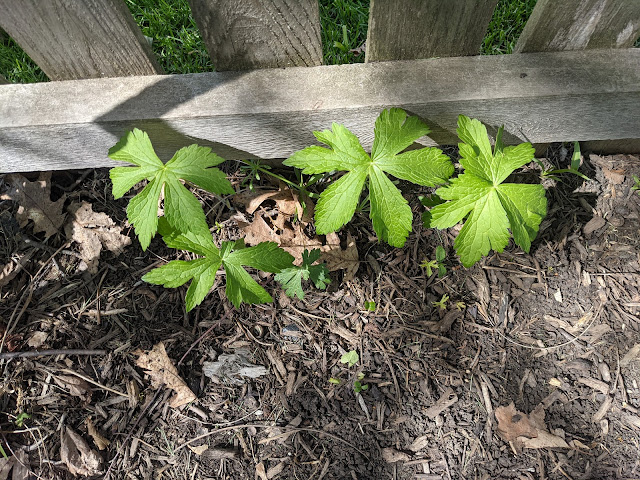Not Mayapple But Instead Wild Geranium - Summer 2021

Back in the shady parts of our yard, along the fence, we have these plants that come up in various spots. My assumption is that they're weeds of some sort and for the past few years, I've been pulling them. But, this year, I learned about Mayapples from Erin the Impatient Gardener . Looking at what she shows off as Mayapples , I wondered if this mult-lobe'd plant was, potentially Mayapple. The Missouri Botanic Garden has a listing up about Mayapple - or Podophyllum peltatum - where they talk about it being used in naturalized gardens and talks about how it disappears during the Summer : ...native Missouri wildflower that occurs in both moist and dry woodland areas throughout the State. From a single stem, each plant grows 12-18" tall and features one or two, deeply-divided, palmately-lobed, umbrella-like, pale green leaves (to 12" diameter). Excellent for naturalizing in woodland settings, wild or native plant gardens. Because plants natur...



